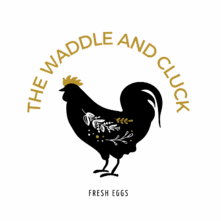Most people don’t think about preserving food until the garden is overflowing and they’re buried under more zucchini than one family should ever have to face. But if you wait until you’re drowning in produce to figure it out, you’re probably going to end up overwhelmed—and waste a lot of what you worked for.
Here’s the better option: learn to how to start preserving food before you grow a single thing.
That might sound backwards, but there’s a kind of quiet magic in figuring out food preservation before harvest season begins. It gives you space to experiment. You get to learn what tools you actually like, what techniques feel manageable, and—maybe most important—what kinds of preserved food your family will actually eat.

How to Start Preserving Food
Start Where You Are (Yes, the Grocery Store Counts)
When we first started leaning into homesteading, I had a little raised bed, a few herbs in pots, and big plans. But nothing was producing yet—not enough to preserve, anyway. So I started where I could: with grocery store produce and farmers market deals.
It was strawberry season, and the local market had flats of berries on sale. I brought home way too many and made a basic freezer jam—no canner, no pectin, just mashed berries, sugar, and a saucepan. I poured it into small jars, let them cool, and stashed them in the freezer. That winter, I opened a jar and it tasted like June. I was hooked.
You don’t need to wait for homegrown food to learn the skills. Practicing on store-bought produce gives you room to mess up without wasting your own harvest. If something doesn’t turn out, no big deal. It wasn’t the only tomato plant you managed to grow that season—it was a tomato from the sale bin.

Learn the Rhythm Before the Rush
Preservation, like gardening, has a rhythm. Things take time. You can’t rush a simmer or a safe seal. You have to be present, hands-on, and okay with doing something that doesn’t offer instant results. It’s deeply satisfying—but only when you’re not in a panic about thirty pounds of tomatoes going soft on your counter.
Starting early means you get to move slower. You can figure out how long it takes you to prep everything, what jars you like best, and how your stove handles big batches of boiling water. You learn to read the signs of a proper seal or notice when a jam has thickened enough.
That knowledge will serve you later, when your garden finally does hand you more than you expected. You won’t be Googling “how to pickle cucumbers” at 9 p.m. with sticky hands. You’ll already know.
It Doesn’t Have to Be Complicated
There’s a myth that food preservation is complicated or that you need a pantry full of gadgets to even start. You don’t. You can begin with just a pot, a spoon, some jars, and a freezer. You don’t need a pressure canner on day one. You don’t need to grow a year’s worth of food to make it worth your time.
Some of the simplest preservation projects are also the most useful. Roasted tomato sauce frozen in quart bags. Dried herbs crushed into glass jars. Extra soup portioned out and stashed in the freezer for future “I don’t want to cook” days. It all adds up. It all matters.
The goal isn’t perfection. It’s progress. It’s building a pantry and freezer that reflect your effort and your values, not your need to impress anyone.

Know What You’ll Actually Eat
This is one of those things I wish I’d understood earlier. Not everything needs to be preserved just because it can be. There’s no reason to water bath can pickled beets if no one in your house eats pickled beets. Don’t freeze 12 bags of shredded zucchini if you don’t actually like zucchini bread.
Preserve what you’ll use—and pay attention to what disappears fastest from your shelves or freezer. That’s your sign to make more next time.
Trying out preservation before you’re growing things lets you test-drive flavors and recipes with zero pressure. You’ll learn what your family loves and what’s not worth the time. That kind of clarity is gold when harvest season hits.
It’s Not Just About the Food
Food preservation is obviously practical—you’re literally saving food for later. But it’s also something deeper. It’s a way to slow down. To take something fleeting and make it last. It’s one of the rare chores that feels both useful and beautiful.
There’s something grounding about standing over a simmering pot of jam or watching steam rise from sealed jars on the counter. It’s work, yes—but it’s quiet, deliberate work that makes you feel connected to your food and your purpose. That’s not a small thing.
And when winter rolls around and you open a jar of homemade broth or pull a bag of frozen tomato sauce from the freezer, there’s pride in that moment. You didn’t just buy food. You made it last. You took care of it. You took care of yourself.

The Best Time to Start Is Before You Think You’re Ready
You don’t need a harvest to begin. You don’t need to grow anything yet. You just need the desire to waste less, do more for yourself, and slow down enough to learn.
So pick something small. Freeze some herbs. Make a batch of jam. Try your hand at a basic pickle recipe. Don’t wait for the “right time”—because the best time to start preserving is before you need it.
That way, when your garden finally does overflow (and it will), you won’t be scrambling to learn how to save it. You’ll already know how.
And that changes everything.








